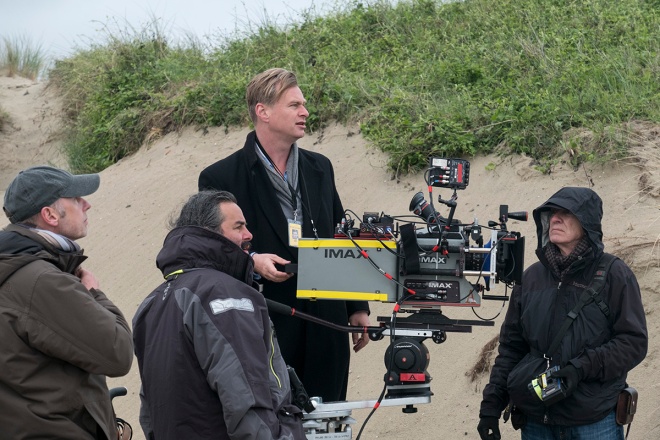Here’s one of the best interviews I’ve heard Christopher Nolan give about his thoughts on film, digital and VFX
Posted in: Animation
I recently listened to this interview on BBC’s The Film Programme between host Francine Stock and Christopher Nolan on the director’s latest project, Dunkirk. It’s a great interview, in which Nolan discusses how he constructed the time-bending narrative in the film, how he used sound and score, and his thoughts on – and this is what interested me the most – shooting with photochemical film and the use of visual effects.
I loved Dunkirk. Everything about the way it is told and the way it was produced makes it such a fantastic cinema-going experience. I feel like I know a lot already about Nolan’s desire to keep using film, and to shoot things as practically as possible, even though of course his movies do rely on plenty of digital visual effects. But I’d never heard him talk about these desires quite like this, so I transcribed the relevant section below (apologies right now for any errors in my transcription).

I feel like there’s a slight conflation in the interview of the idea of shooting on film and the use of ‘CGI’ in filmmaking, but I absolutely get what Nolan is saying about the ‘feeling’ from what you see on screen. And in terms of visual effects, by shooting so much practically, any visual effects artist will have a very obvious target to match in anything that needs to be generated digitally, or composited from multiple plates, or cleaned-up with digital tools. In fact, that’s why the VFX in Nolan’s films are so seamless, I think. They have to match what was shot, or what’s the point of including them?
Anyway, have a listen to the interview, or read the transcript below, and tell me what you think in the comments.
Francine Stock: … How important was it for you to get that sense of everything being real?
Christopher Nolan: I really wanted to do as much as possible for real, and put as much reality in front of our cameras as possible. And put the actors into safe versions the physical circumstances of the real events. I’ve always had tremendous faith in the film medium, particularly photochemical film – the real thing. If you can record with that high resolution format, and we shot this entire film on large format photochemical film, with its analogue colour and depth of the image – it really, it’s the best analogy for the way the eye sees that’s being created technically.
It really allows the audience to really feel that they’re there in a way that with a greenscreen representation or computer graphics representation, or something more artificial – that has a different patina. It puts them in a different space.

Francine Stock: Because the brain is already clearly sophisticated in the way that it looks at computer images now, we can tell can’t we, at some level?
Christopher Nolan: We can absolutely tell. I think a lot of engineers and filmmakers that I talk to – they make the mistake of trying to gauge the effectiveness of a technique on how the audience can conscious parse something, and how they can explain their response to something. And that’s a completely false read. It’s really about how you feel watching something.
The best analogy I can make is about visual effects. When you watch a film from 20 years ago, and the visual effects are unconvincing, and sometimes laughable, and that’s to do with our changing perceptions over time. The eye is very sophisticated, it’s much more sophisticated than people who give it credit for, people in the engineering sphere and looking at this technology. There’s a lot going on that is poorly understood, and the audience is not capable of articulating, nor should they be asked to.

So when you put photochemical film in front of an audience and then you put a digital representation and say, ‘Can you tell the difference?’ Well if the answer is ‘No, therefore there is no difference,’ and that’s not the case. And what we’re finding increasingly in today’s world is people are now starting to value the analogue abilities of film, the way that it affects your eye differently than video imaging, differently than digital imaging.
I think there was a big thing of film versus digital ten years that’s finally begun to go away and we’ve started to respect those different media. I think a lot of that shift is based on an increasing recognition that digital is never going to be like film. It’s a different technology. It simply works different, and it affects the eye differently. And that’s fine. We’ve had different media in parallel forever. That’s what life is all about – you’ve got oil paints and you’ve got acrylics. It’s just different. I’m a big believer in photochemical film and I think it has a unique impact.
If you’re looking for more reading/listening regarding Dunkirk, especially in terms of the cinematography, check out these two pieces by Michael Goldman:
Dunkirk Post: Wrangling Two Large Formats – American Cinematographer
First AC Bob Hall on the Camera and Lensing Challenges of Dunkirk – StudioDaily

Post a Comment